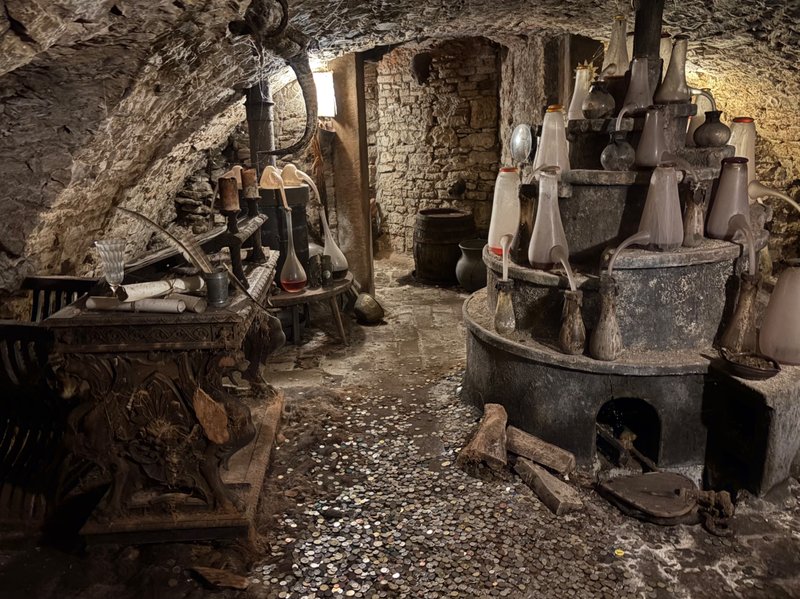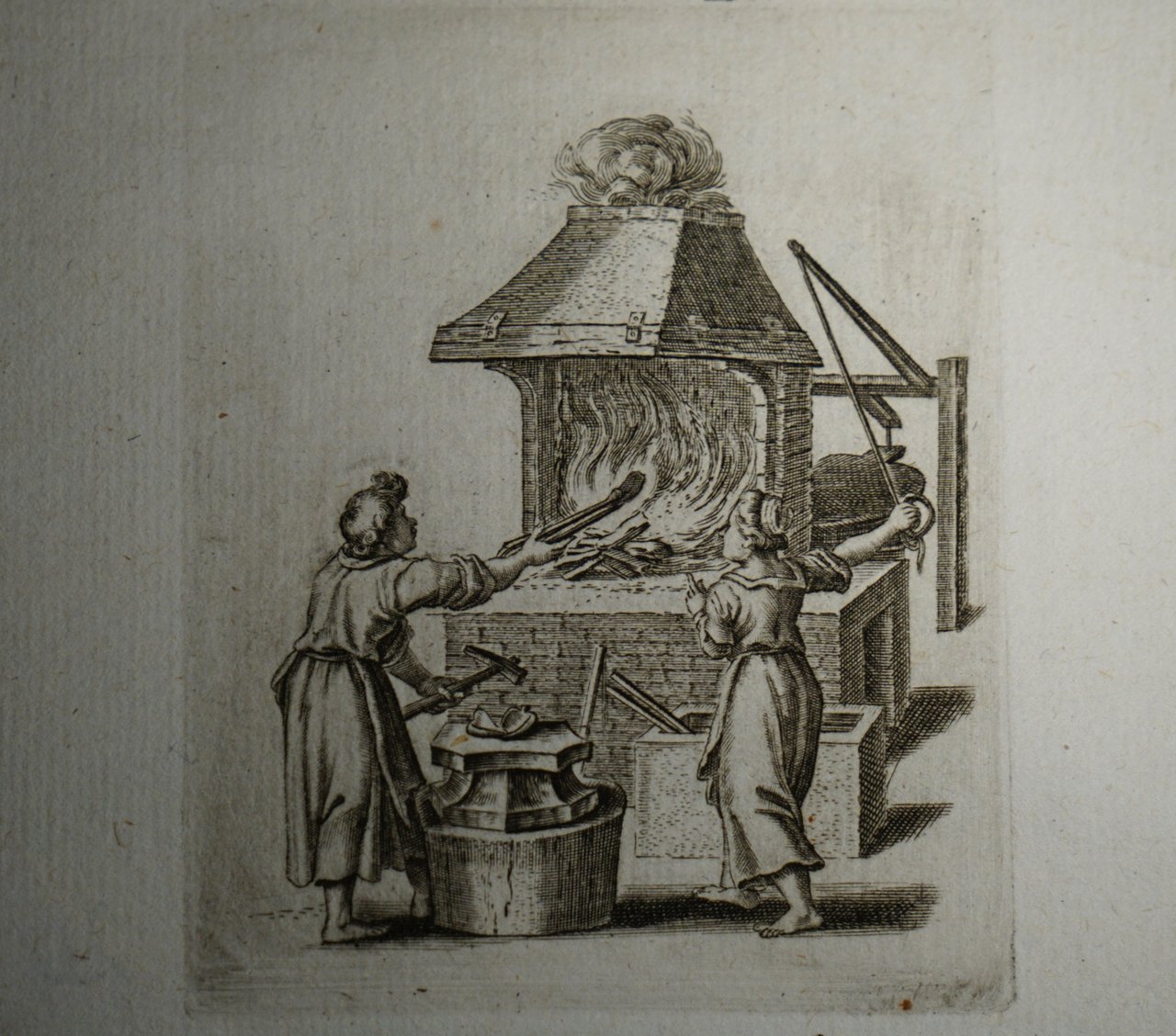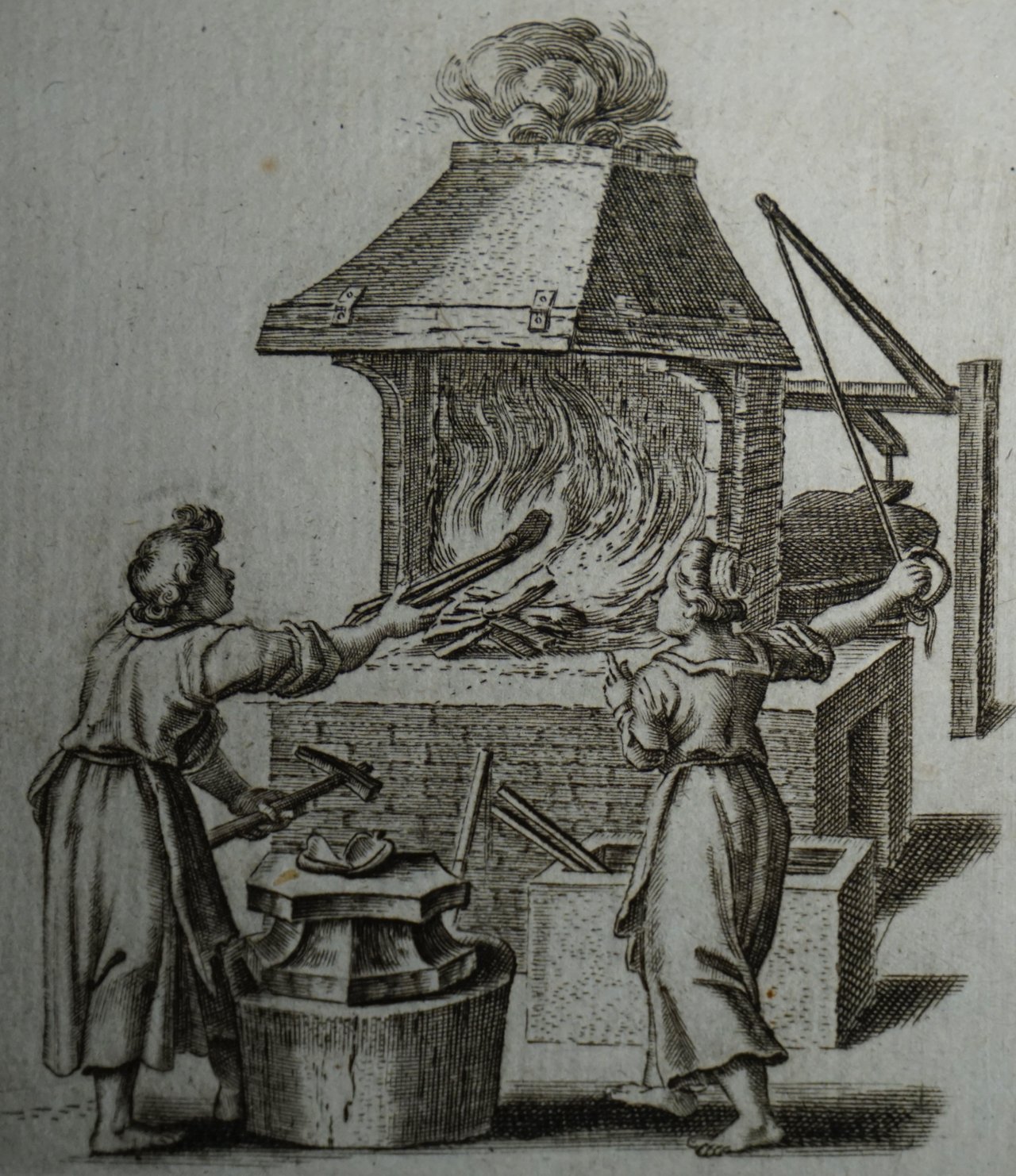Copper Engraving and Goldsmith
7 comments
Hey dear community, first of all I would like to welcome you all to my new post and hope you had a day full of interesting experiences! In this post, I would like to talk a little about art history and hope you are able to expand your knowledge.
You can see here an original copper engraving which was created at the beginning of the 18th century and provides insight into a forge in which two people are currently at work and if you consider that this work is already over 300 years old, it is still in good condition. Fittingly, I would like to go into the connection of the Copper engraving and the goldsmiths who have developed this printing process and the goldsmiths during the Reneisance already had a lot of experience when it came to engraving jewelry and during the 15th century, more and more goldsmiths became copper engravers. With a sickle, the goldsmiths scraped deepenings into their works and in addition, the works were often recorded on paper and this was done by filling paint into the previously carved deepenings and then bringing it into contact with paper and so the origin of this process was born, which was later more and more revolutionized and replaced by a metal plates as a basis. The plates were sanded and covered with a thin layer of wax or chalk in order to better correct mistakes and then the sketch was placed on the plate and then the motif was painted into the plate with help of a sickle and during the printing process, the plate was coated with black paint and it was important to take care that it can penetrate well into the deepenings and with the help of heat, the color adapts better and then the color was wiped at places of the plate that should not print. One of the first known artists who had devoted themselves to these production processes in more detail was the goldsmith Albrecht Dürer and in the past copper engravings were particularly popular for illustrations in books and this technique had the advantage that you could create very detailed works with this method and you could make larger quantities without problems and it was possible to produce hundreds of copies per plate.
Thank you for the visit and I hope you could learn something new about art history! I captured these pictures with my Camera Sony Alpha 6000 plus 55-210 mm lens






Comments